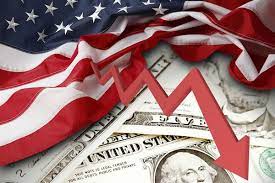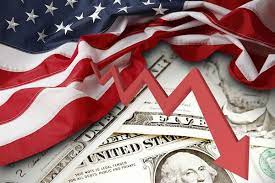
With Covid-19 infections spreading throughout the globe as well as in the United States, there was straining in the global supply chains and resulting in shortages of items like vehicles. That potentially led the US economy to grow at its slowest pace in more than a year in the third quarter.
Strong inflation, fuelled by economy-wide shortages and government pandemic rescue money, is projected to weigh into growth which is expected to be reflected in the US Commerce Department's advance gross domestic product data which are to be released.
The economy was further hampered by dwindling fiscal support and Hurricane Ida, which wreaked havoc on US offshore oil production at the end of August.
However, there are indicators that economic activity accelerated towards the flag end of the quarter as cases of Covid-19 infections caused by the delta variant of the coronavirus declined.
"Delta is the biggest reason why we have this noticeable deceleration," said Ryan Sweet, a senior economist at Moody's Analytics in West Chester, Pennsylvania. "We're going to see growth re-accelerate in the fourth quarter and the first half of next year as the effect of the Delta variant begins to wane. It doesn't mean that we won't have future waves of COVID, but with each passing wave, the economic costs continue to diminish."
According to a Reuters poll of economists, American GDP likely grew at a 2.7 per cent annualized rate in the third quarter. However, the poll was conducted prior to data being released on Wednesday indicating a substantial increase in the goods trade imbalance in September, despite a drop in exports.
Major Wall Street firms, notably Goldman Sachs, were prompted to lower their GDP growth prediction by half a percentage point to 2.75 per cent because of the largest goods trade gap on record. Its already low forecast of 0.5 per cent was further lowered to 0.2 per cent by the Atlanta Federal Reserve.
Irrespective of what the actual GDP growth numbers turn out to be, it is most likely that the US economy went through its slowest performance in the third quarter since the second quarter of 2020, a period when there was a historic drop in the wake of strict obligatory restrictions imposed in the country to contain the first wave of the Covid-19 pandemic.
In the second quarter, the economy expanded at a rate of 6.7 per cent. Labor shortages in factories, mines, and ports were exacerbated as a result of the Delta variant of the coronavirus, along with stagnation in the supply chain.
A moderate pace of inventory reduction is expected to mostly be the cause of the expected limited growth in the third quarter of the current year. Due to shortages, especially of motor vehicles, the overall inventory accumulation also remained low during the quarter.
Aside from the shutdown in spring 2020, September was the worst month for auto production since 2010, due to a global semiconductor shortage.
"The largest boost to GDP should come from a slower drawdown of inventories compared to in the second quarter, as supply shortage issues initially presented through weaker inventories but now have become a constraint on consumption instead," said Veronica Clark, an economist at Citigroup in New York.
(Source:www.reuters.com)
Strong inflation, fuelled by economy-wide shortages and government pandemic rescue money, is projected to weigh into growth which is expected to be reflected in the US Commerce Department's advance gross domestic product data which are to be released.
The economy was further hampered by dwindling fiscal support and Hurricane Ida, which wreaked havoc on US offshore oil production at the end of August.
However, there are indicators that economic activity accelerated towards the flag end of the quarter as cases of Covid-19 infections caused by the delta variant of the coronavirus declined.
"Delta is the biggest reason why we have this noticeable deceleration," said Ryan Sweet, a senior economist at Moody's Analytics in West Chester, Pennsylvania. "We're going to see growth re-accelerate in the fourth quarter and the first half of next year as the effect of the Delta variant begins to wane. It doesn't mean that we won't have future waves of COVID, but with each passing wave, the economic costs continue to diminish."
According to a Reuters poll of economists, American GDP likely grew at a 2.7 per cent annualized rate in the third quarter. However, the poll was conducted prior to data being released on Wednesday indicating a substantial increase in the goods trade imbalance in September, despite a drop in exports.
Major Wall Street firms, notably Goldman Sachs, were prompted to lower their GDP growth prediction by half a percentage point to 2.75 per cent because of the largest goods trade gap on record. Its already low forecast of 0.5 per cent was further lowered to 0.2 per cent by the Atlanta Federal Reserve.
Irrespective of what the actual GDP growth numbers turn out to be, it is most likely that the US economy went through its slowest performance in the third quarter since the second quarter of 2020, a period when there was a historic drop in the wake of strict obligatory restrictions imposed in the country to contain the first wave of the Covid-19 pandemic.
In the second quarter, the economy expanded at a rate of 6.7 per cent. Labor shortages in factories, mines, and ports were exacerbated as a result of the Delta variant of the coronavirus, along with stagnation in the supply chain.
A moderate pace of inventory reduction is expected to mostly be the cause of the expected limited growth in the third quarter of the current year. Due to shortages, especially of motor vehicles, the overall inventory accumulation also remained low during the quarter.
Aside from the shutdown in spring 2020, September was the worst month for auto production since 2010, due to a global semiconductor shortage.
"The largest boost to GDP should come from a slower drawdown of inventories compared to in the second quarter, as supply shortage issues initially presented through weaker inventories but now have become a constraint on consumption instead," said Veronica Clark, an economist at Citigroup in New York.
(Source:www.reuters.com)





